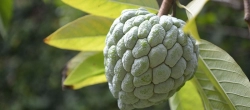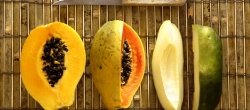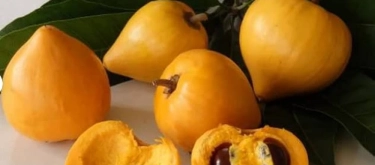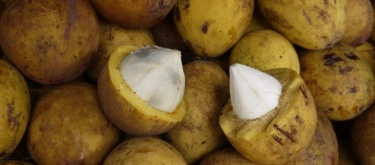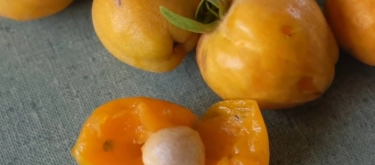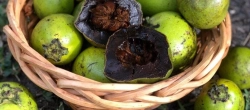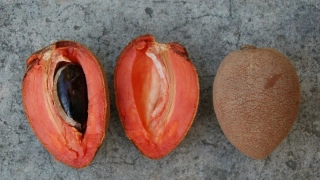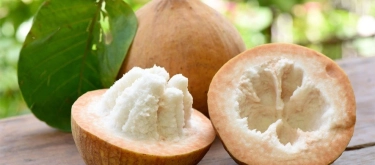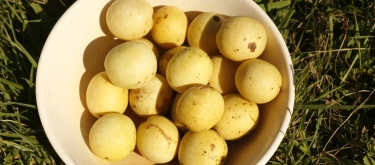Rollinia: Taste Profile, Aroma, Benefits and Health Risks
Rollinia (also known as Biribá, Wild Sugar Apple; Rollinia deliciosa) is a tropical fruit native to the Amazon basin and widespread across Brazil, Peru, and neighboring South American regions. Closely related to the custard apple family (Annona), Rollinia is esteemed for its uniquely sweet flavor, creamy pulp, and highly aromatic quality, making it increasingly popular internationally as a tropical delicacy.
Rollinia seeds are toxic and must not be consumed. Individuals with latex or tropical fruit allergies (e.g., avocado, kiwi) should exercise caution. Excessive consumption can cause mild digestive upset. Safe for moderate consumption during pregnancy.
What does Rollinia taste like?
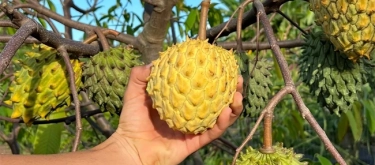
Complete Sensory Description:
Taste
Rollinia fruit presents a distinctly sweet, creamy flavor accompanied by delicate acidity. Prominent notes of lemon custard, banana, pineapple, and subtle hints of caramelized sugar create a luxurious taste profile.
Aroma
The aroma is intensely fruity, sweet, and tropical, reminiscent of ripe bananas, pineapple, citrus blossoms, and faint vanilla-like undertones.
Texture
Rollinia’s texture is exceptionally soft, creamy, and custard-like, melting readily in the mouth. The pulp is juicy, slightly gelatinous, and contains numerous inedible, glossy, dark seeds embedded within.
Appearance
The fruit is round or oval, typically 10–20 cm in diameter, featuring a yellow-green skin covered in distinct, pointed, soft spines. Internally, the pulp is creamy-white, segmented, and moist, surrounding large, dark-brown or black seeds.
In-depth Flavor Analysis:
Rollinia's complex flavor emerges from an intricate blend of sugars, organic acids, and aromatic volatiles, creating its luxurious, dessert-like profile:
-
Sweetness Profile: High concentrations of fructose and sucrose provide a dominant sweetness resembling caramelized sugar or custard desserts. This sweet core is essential to its appealing dessert-quality taste.
-
Acidic Profile: Mild acidity derived primarily from citric and malic acids adds balance, brightening the sweetness and lending lemony, citrusy undertones. Citric acid particularly accentuates refreshing tropical notes, complementing the sweetness perfectly.
-
Aromatic Compounds: Volatile esters, including isoamyl acetate and ethyl hexanoate, contribute banana and pineapple notes, while terpenoids such as linalool and geraniol introduce delicate floral-citrusy nuances. Low levels of vanillin-like compounds deepen the complexity, subtly evoking hints of vanilla or caramel.
-
Factors Affecting Flavor: Ripeness significantly influences flavor complexity; optimally ripe fruits exhibit reduced acidity, intensified sweetness, and increased aromatic intensity. Climatic factors such as humidity, rainfall, and soil composition further shape these flavor characteristics, leading to regional flavor nuances.
Varieties and Culinary Applications:
Rollinia does not have widely commercialized named varieties, but regional variations exist in sweetness, aroma intensity, and fruit size. Culinary uses include:
- Fresh Consumption: Eaten fresh by scooping out the soft pulp with a spoon.
- Desserts: Frequently utilized in ice creams, sorbets, puddings, mousse, fruit salads, and creamy desserts.
- Beverages: Blended into smoothies, milkshakes, tropical juices, or incorporated into cocktails.
- Preserves: Used in jams, sauces, syrups, and sweet compotes.
Selection and Storage:
Select Rollinia fruits with evenly yellow-colored skin that yields slightly to gentle pressure, emitting a pleasant, intense fragrance. Avoid overly green, hard, or severely bruised fruits. Store ripe fruits refrigerated for 1–2 days, as their soft texture makes them highly perishable. For extended storage, freeze the pulp promptly after removing seeds.
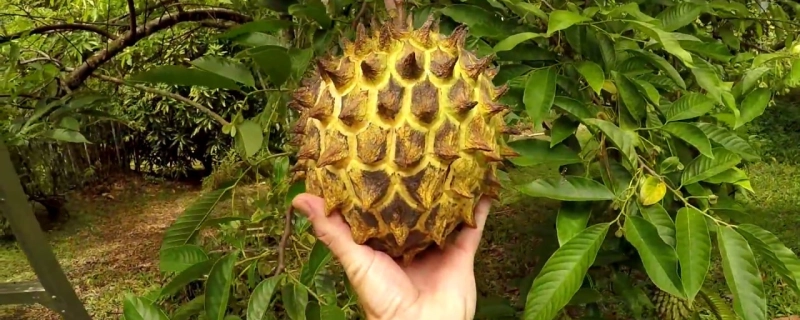
Nutritional Insights:
Rollinia is rich in dietary fiber, vitamin C, B-complex vitamins, calcium, potassium, and antioxidants. Regular consumption can help address vitamin C deficiencies, strengthen the immune system, and promote digestive health due to its fiber content. Potassium levels support cardiovascular health and help maintain healthy blood pressure levels, particularly beneficial for individuals prone to hypertension or cardiovascular risks.
Expert Insights & Culinary Tips:
- Flavor Pairing: Rollinia’s custard-like sweetness pairs ideally with contrasting acidic or fresh ingredients like lime, passion fruit, or yogurt, enhancing desserts or beverages.
- Preparation Recommendations: Always discard the toxic seeds carefully before culinary use. For best taste and texture, serve chilled or lightly frozen as a natural sorbet-like treat.
- Texture Utilization: Rollinia’s creamy consistency makes it a perfect base ingredient in desserts, smoothies, or dairy-based preparations.
Interesting and Curious Facts:
- Rollinia trees have historically been cultivated by indigenous tribes across the Amazon for centuries, valued for both nutrition and traditional medicinal uses, including alleviating digestive ailments.
- The local name "Biribá" originates from indigenous South American languages, reflecting the fruit's deep historical roots in Amazonian cultures.
- Due to its softness and fragility, Rollinia rarely appears in commercial supermarkets outside tropical regions, making it a sought-after delicacy among tropical fruit connoisseurs.
Harm and Dietary Considerations:
Rollinia seeds are toxic and should never be ingested. Overconsumption of the fruit may cause digestive discomfort due to its high sugar and fiber content. Individuals allergic to latex or tropical fruits should exercise caution. Safe for moderate consumption during pregnancy, but no established safety data for excessive consumption.
Religious Dietary Considerations:
Rollinia is universally acceptable within major religious dietary practices, including Halal, Kosher, Hindu vegetarianism, and Buddhist traditions. No specific religious dietary restrictions apply.
Final Thoughts & Sensory Journey:
Rollinia delivers a luxurious sensory experience, characterized by creamy sweetness, refreshing tropical aromas, and a delicate balance of sweet and mildly acidic nuances. Its soft, custard-like texture, combined with nutritional richness and versatility in culinary applications, positions Rollinia as a treasured fruit worthy of exploration.
Resources:
- "Edible Medicinal and Non-Medicinal Plants" by T.K. Lim (Springer, 2012)
- "Fruits of Warm Climates" by Julia F. Morton (Echo Point Books, 1987)
- "Amazonian Fruits: Their Nutritional Value and Potential Health Benefits" by Rosa E. Tundis et al. (CRC Press, 2019)
